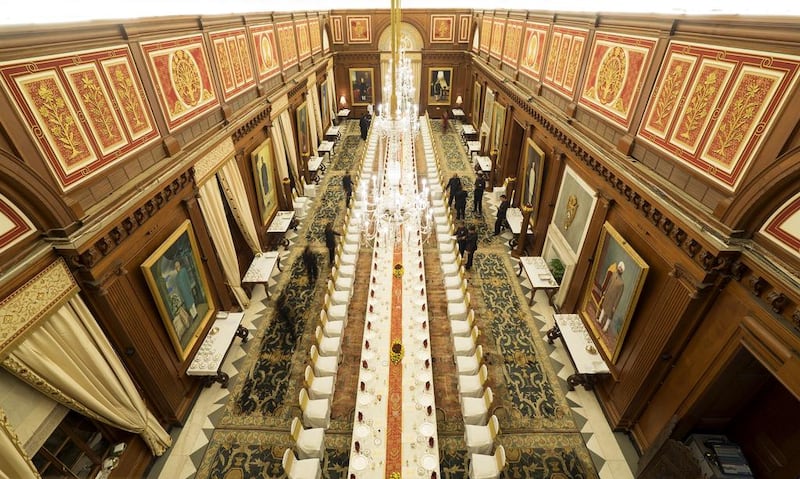Rashtrapati Bhavan, the presidential palace in New Delhi, is not only the home of the president, it is a symbol of the majesty of the Indian state.
All visiting heads of state dine here, amid all the pomp and pageantry India can muster. Yet once it was a symbol of British rule over India – and instead of an Indian leader, the British Viceroy lived amid its grand interiors.
The culinary history of this monumental building – from quintessentially British banquets to the more Indianised meals served to heads of state these days – is chronicled in Around India's First Table.
This is the first book about dining and entertaining at Rashtrapati Bhavan (presidential residence) and it is full of fascinating stories. It is hard to imagine Indians not being welcome in one of the most important buildings in the country, but the book tells us that it wasn’t until the time of Lord Mountbatten, the last Viceroy before Indian independence in 1947, that Indians were welcome inside. He ruled that 50 per cent of guests at banquets and garden parties must be Indian.
After independence, the portraits on the walls of the grand banquet hall were those of past viceroys. Gradually, the Indian state realised it must stamp its own identity on its surroundings, and so they were replaced by portraits of Indian presidents.
Likewise, the food at banquets went through a similar change. Throughout the time of their colonial rule, the British rejected Indian food. Even after they had left, food at the palace continued to reflect British preferences. The first course was always soup – a totally un-Indian dish – followed by a mélange of Anglo-French cuisine.
As the Indian state became more confident, Indian dishes began to appear on the menu. To impress guests, the palace cooks turned for inspiration to masterpieces first created in the courts of the great Mughals.
These dishes – great legs of spiced mutton and fragrant biryani – were added to the menu but with a decidedly light touch to counter the thick and oily curries that can give Indian cuisine a bad name.
For example, in the description of the preparations for the Emir of Qatar's visit last year, the authors – Lizzie Collingham (author of Curry: A Tale of Cooks and Conquerors) and food historian Salma Hussain – tell how guests were served a delicate almond soup seasoned with curry leaves, garlic and green chilli.
Over the years, tandoors were installed in the palace kitchens for the famous tandoori chicken and naan breads.
Other aspects of protocol were also made to conform with Indian traditions: garlands replaced bouquets and the ladies, in the 1960s, were no longer asked to withdraw after dessert. The desserts themselves changed from the heavy puddings and trifles loved by the British to almond kheer (a milky rice confection) and saffron-scented delights.
Out of respect for Mahatma Gandhi’s beliefs, alcohol has never been served in the palace. Guests wash down fabulously aromatic Mughal delicacies with orange or pomegranate juice.
In this delightful tour d’horizon of the presidential palace, the authors talk about the cooks, most of whom are the third or fourth-generation, the preparations for a banquet, how the suffocatingly hot kitchens were modernised in 2002 under president Abdul Kalam and air-conditioned.
It is illustrated with pictures by Dheeraj Paul that give a glimpse into the secret life of the palace behind the facade. The authors also talk of how each Indian president has made a contribution by adding food from their regions – and so dishes such as idli, a south Indian steamed rice cake, previously deemed too humble, became a regular item, as the palace consciously tries to showcase the immense diversity of India’s regional cuisines.
artslife@thenational.ae





